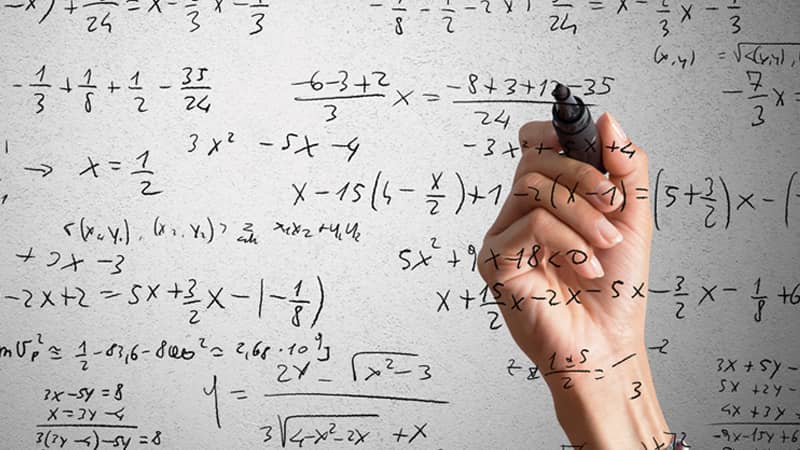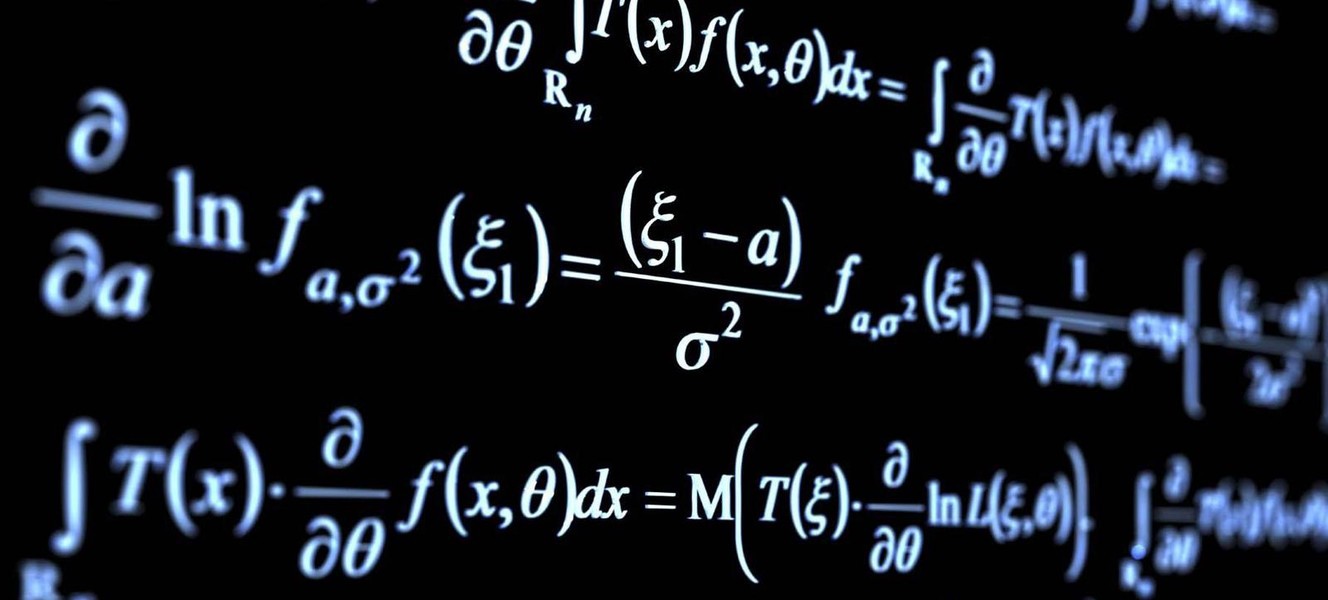IMPORTANT MESSAGES

Course Information
A-Levels
A-Level – Y1
1. Introduction to A-Level Mathematics
2. Induction
3. Algebraic expressions
4. Quadratics
5. Equations and inequalities
6. Graphs and transformations
7. Straight-line graphs
8. Circles
9. Algebraic methods
10. Binomial expansion
11. Trigonometric ratios
12. Trigonometric identities
13. Vectors
14. Differentiation
15. Integration
16. Exponential and logarithms
17. Algebraic methods
18. Functions and graphs
19. Sequences and series
20. Binomial expansion
21. Radians
22. Trigonometric functions
23. Trigonometry and modeling
24. Parametric equations
25. Differentiation
26. Differentiation of parametric and implicit functions
27. Differentiation in context
28. Numerical methods
29. Integration
30. Integration by substitution
31. Integration by parts
32. Differential equations
33. Vectors
34. Revision and introduction to mechanics and statistics
A-Level – Y2
1. Introduction to Mechanics (1.8)
2. Data collection (1.1)
3. Constant acceleration (1.9)
4. Large data set (1.1)
5. Measure of location (1.2)
6. Variable acceleration (1.11)
7. Data representation (1.3)
8. Projectile motion (2.6)
9. Correlation (1.4)
10. Further kinematics (2.8)
11. Probability (1.5)
12. Forces and motion (1.10)
13. Statistical distributions (1.6)
14. Friction (2.5)
15. Hypothesis testing (1.7)
16. Moments (2.4)
17. Regression (2.1)
18. Application of forces (2.7)
19. Conditional probability (2.2)
20. Further kinematics (2.8)
21. Normal distribution (2.3)
AQA Level 3 Certificate Mathematics Studies (Core Maths)
AQA Level 3 Certificate Mathematics Studies (Core Maths)
1. Introduction to Core Maths.
2. Data
3. Collecting & Sampling
4. Representing Data Numerically
5. Representing Data Diagrammatically
6. Numerical Calculations
7. Percentages
8. Interest Rates
9. Repayment & the Cost of Credit
10. Graphical Representation
11. Taxation
12. Solution to Financial Problems
13. The Modelling Cycle
14. Fermi Estimation
15. Spreadsheets
16. Presenting logical and reasoned arguments in context
17. Communicating mathematical approaches and solutions
18. Analysing critically
19. Mathematical Calculations
20. Properties of a normal distribution
21. Notation
22. Calculating Probabilities
23. Population and sample
24. The mean of sample size n
25. Confidence Intervals
26. Correlation
FS – Entry 3
FS – Entry 3
1. Welcome - Course structure - Unit A1 To get to know each learner about them progression & aspiration.
2. Initial Assessment: Assessments on knowledge & skills related to Numeracy. Identify their level.
3. Add and subtract using three-digit whole numbers
4. Approximate by rounding numbers less than 1000 to the nearest 10 or 100 and use this rounded answer to check results
5. Read, write and understand thirds, quarters, fifths and tenths, including equivalent forms
6. Read, measure and record time using am and pm
7. Read time from analogue and 24-hour digital clocks in hours and minutes
8. Use and compare measures of length, capacity, weight and temperature using metric or imperial units to the nearest labelled or unlabelled division
9. Read, write and use decimals up to two decimal places
10. Calculate with money using decimal notation and express money correctly in writing in pounds and pence
11. Round amounts of money to the nearest £1 or 10p
12. Read, measure and record time using am and pm
13. Read time from analogue and 24-hour digital clocks in hours and minutes
14. Read, measure and record time using am and pm
15. Read time from analogue and 24-hour digital clocks in hours and minutes
16. Use and compare measures of length, capacity, weight and temperature using metric or imperial units to the nearest labelled or unlabelled division
17. Read, write and understand thirds, quarters, fifths and tenths, including equivalent forms
18. Calculate with money using decimal notation and express money correctly in writing in pounds and pence
19. Round amounts of money to the nearest £1 or 10p
20. Read, write and use decimals up to two decimal places
21. Sort 2-D and 3-D shapes using properties, including lines of symmetry, length, right angles, angles, including in rectangles and triangles
22. Extract information from lists, tables, diagrams and charts and create frequency tables
23. Interpret information, to make comparisons and record changes, from different formats, including bar charts and simple line graphs
24. Organise and represent information in appropriate ways, including tables, diagrams, simple line graphs and bar.
FS – Level 1
FS – Level 1
1. Introduction to Level 1 Functional Skills
2. L1.3 Multiply and divide whole numbers and decimals by 10, 100, 1000
3. L1.4 Use multiplication facts and make connections with division facts
4. L1.5 Use simple formulae expressed in words for one or two-step operations
5. L1.6 Calculate the squares of one-digit and two-digit numbers
6. L1.7 Follow the order of precedence of operators
7. L1.8 Read, write, order and compare common fractions and mixed numbers
8. L1.9 Find fractions of whole number quantities or measurements
9. L1.10 Read, write, order and compare decimals up to three decimal places
10. L1.10 Read, write, order and compare decimals up to three decimal places
11. L1.11 Add, subtract, multiply and divide decimals up to two decimal places
12. L1.12 Approximate by rounding to a whole number or to one or two decimal places
13. L1.13 Read, write, order and compare percentages in whole numbers
14. L1.14 Calculate percentages of quantities, including simple percentage increases and decreases
15. L1.15 Estimate answers to calculations using fractions and decimals
16. L1.16 Recognise and calculate equivalences between common fractions, percentages and decimals
17. L1.17 Work with simple ratio and direct proportions
18. L1.18 Calculate simple interest in multiples of 5% on amounts of money
19. L1.18 Calculate simple interest in multiples of 5% on amounts of money (non calculator)
20. L1.19 Calculate discounts in multiples of 5% on amounts of money (non calculator)
21. L1.20 Convert between units of length in the same system
22. L1.21 Recognise and make use of simple scales on maps and drawings
23. L1.22 Calculate the area and perimeter of simple shapes including those that are made up of a combination of rectangles
24. L1.23 Calculate the volumes of cubes and cuboids
25. L1.24 Draw 2-D shapes and demonstrate an understanding of line symmetry and knowledge of the relative size of angles
26. L1.27 Represent discrete data in tables, diagrams and charts including pie charts, bar charts and line graphs
27. L1.25 Interpret plans, elevations and nets of simple 3-D shapes
28. L1.26 Use angles when describing position and direction, and measure angles in degrees
29. L1.29 Find the mean and range of a set of quantities
30. L1.30 Understand probability on a scale from 0 (impossible) to 1 (certain) and use probabilities to compare the likelihood of events
31. L1.31 Use equally likely outcomes to find the probabilities of simple events and express them as fractions
GCSE Mathematics – Foundation
GCSE Mathematics – Foundation
1. Fractions
2. Fractions, Decimals, Percentages
3. Ratios and Proportions
4. Angle properties in shapes
5. Angles in Parallel Lines
6. Algebraic Manipulations
7. Solving Equations
8. More Solving Equations
9. Statistics
10. Statistical Graphs and Measures
11. Sequences
12. Probability
13. Unit 3. (Session 1) Groundwork: Geometry
14. Unit 3. (Session 2) Groundwork: Geometry
15. Bearings
16. Unit 8. Accuracy
17. Unit 9. Circles
18. Unit 12. Quadratics
19. Unit 15. Statistical graphs and measures
20. Unit 16. Transformations of shapes
21. Unit 17. Bivariate data
22. Pythagoras
23. Trigonometry 1 & 2
GCSE Mathematics - Higher
GCSE Mathematics - Higher
1. Decimals & Rounding
2. Calculator Skills
3. Percentages
4. Ratio
5. Proportion
6. Statitstical Graphs & Measures
7. Algebraic Manipulation
8. Sequences
9. Probability
10. Probability of Combined events
11. Bivariate Data
12. Sampling
13. Angle Facts
14. Growth & Decay
15. Pythagoras’Theorem Trigonometry
16. Trigonometry
17. Simultaneous Equation
18. Indices and Roots
19. Circle
20. Volume
21. Surface Area Compound Measures
22. Construction
23. Quadratics
24. Quadratic Graphs
25. Straight line
26. Further graphs
27. Transformation & Vectors
28. Simultaneous Equations
29. Accuracy
30. Equations and Inequalities
Department Expectations
- Everyone will act respectfully towards other students, teachers, and support staff
- Students should arrive punctually to lessons
- Students should attempt to attend ALL lessons
- Students should be ready to work, no coats, hats etc to be worn in class
- Students are expected to complete their weekly homework task
- No eating or drinking (except water) in class, including chewing gum
- No headphones, AirPods etc
- No mobile phones unless specifically instructed
- No charging of mobile phones in the classroom
- IDs must be worn at all times
- Students should come with their own equipment (black pens, pencil, scientific calculator, Maths set, eraser, and sharpener)
Information Section
Important Dates
Autumn 1 Half Term Assessment
W/B – 10/10/22
GCSE Resit Exam
1 November 2022 AM – Paper 1 NC
3 November 2022 AM – Paper 2 C
7 November 2022 AM – Paper 3 C
Autumn 2 Half Term Assessment
W/B – 05/12/22
GCSE Resit Results Day
12 January 2023
GCSE Mock Assessment
W/B – 23/01/23
Spring 1 Assessment
W/B – 06/02/23
Spring 2 Assessment
W/B – 20/03/23
Summer 1 Assessment
W/B –
Summer GCSE Exam Dates
TBC
Meet the Team
Click the name to contact via email
Teachers and management
Support Tutors
Intervention
GCSE Intervention
Functional Skills – Entry 3
Functional Skills – Level 1
University of Greenwich Maths Ambassador
RAP Timetable

